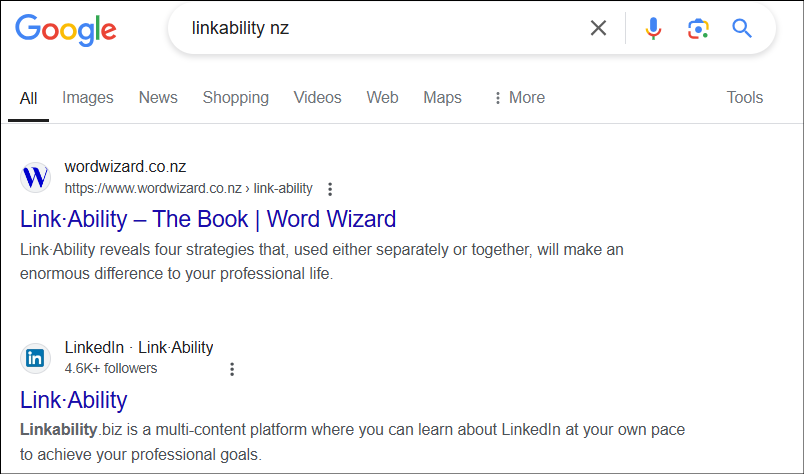
Just as we have been ‘trained’ by social media companies to worship at the altar of post views, we have been told over and over that this is also the prime purpose of LinkedIn company pages.
It isn’t!
And just as posting is no longer a sufficiently viable strategy on our personal profiles, it is no longer useful as a measurement of company page success.
Indeed, we need to think differently about pages.
In our book Business Gold, Building Awareness, Authority and Advantage, Michelle J Raymond and I gave 28 reasons why having a page was crucial marketing collateral for businesses. Only a few related directly to publishing posts on pages. Yet, still, that is where most attention is placed.
However, recent research shows that posts from pages that are not boosted by advertising make up only 2% of LinkedIn members’ feeds. This reduces the visibility of page posts to near INvisibility. By contrast, around half the posts in feeds are commercial in some way, many of them promoted posts from pages.
There are ways to increase the chances of page posts being seen but by and large these are not used by companies to any great extent. Or very successfully.
So, let’s look at this another way. Let’s look at how else we can use company pages to gain advantage for our business.
The first is by growing page followers. You may think ‘what’s the point if they’re not going to see our posts’ but in fact, there are good reasons to grow your page.
Chief among these is that each time you invite a connection to follow your page, there’s the chance they will click the link to look at it. This act alone raises visibility because while there they may see you have a newsletter and subscribe, they may see you hold events and register to attend your next one, or they may spot a recent post and look at it. All of these are positive actions that open the door to direct interaction.
Tip: use all your 250 follower-invite allocation each month for fast growth of your page.
The second is for being found on Google. Type your business name and location into Google and you’ll find that your LinkedIn company page will be – just like with your LinkedIn profile – shown among the first few search results. If you want your business to be found, you need a LinkedIn company page. Pages that are complete, have quality content, a strong following and longevity will be more likely found on Google (and now, AI).
The third is social proof. If your page has a strong following, it demonstrates to potential customers that your business is well regarded, stable, and worth considering next time they’re looking for the B2B services or products you provide.
The key is to have a quality page that, just like your profile, is complete and with lots of useful information. It should not be regarded as a sales tool but as a marketing tool that helps potential customers learn about how you can help them.
Pages can also help build credibility for the brand and showcase team members whose skill resonate with customers.
The fourth is visibility via content format features that differ from publishing posts. These include newsletters and events.
Subscribers of newsletters receive notifications of new issues and give businesses opportunities to promote themselves within them. Newsletters sit on the article format platform and have multiple advantages over posts such as the inclusion of links, images, videos etc within the text itself, making them truly interactive.
Hosting LinkedIn lives or audio events gives companies opportunities to promote employees, share information about new products and services, showcase thought leaders within the C-suite and so much more. They expose businesses to a new and often wider audience who wouldn’t otherwise find out about them. Again, this is an excellent marketing tool that most businesses are entirely missing.
Once we start thinking about LinkedIn company pages as more than just for content publishing, we start to see them in a whole different light. And maybe, just maybe worth paying attention to.